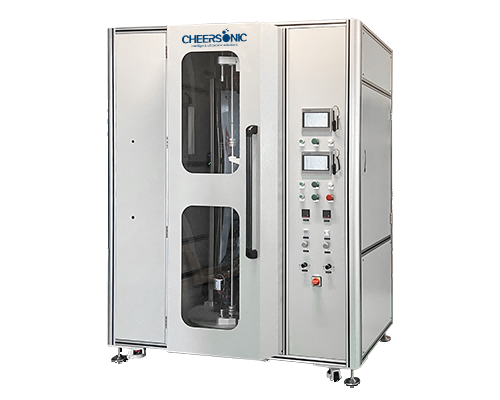Silicone Coatings
Silicone Coatings – Medical Coating Systems – Cheersonic
Over the past few decades, the use of silicone polymers in short-term and long-term medical devices has increased. Medical-grade silicones are silicones that have been tested for biocompatibility. Biocompatibility is determined through comprehensive testing of the final device and its composites, so the implant site, duration, and intended use should be considered.
01. Silicone
Silicone is a polymer, also known as polymerized siloxane or polysiloxane, consisting of an inorganic silicon-oxygen backbone with organic groups attached to silicon atoms. Silicones can be synthesized into materials with a variety of compositions and properties. Their morphology varies from liquid to gel or rubber to hard plastic. Silicones are generally characterized by high temperature resistance, low chemical reactivity, good adhesion, good lubricity, strong durability, the ability to repel water and form a waterproof seal, and do not support microbial growth. These properties make them ideal materials for non-vascular implantable devices such as gastroenterology, urology, and respiratory.
02. Dip and Spray Coating Technologies
In order to limit tissue growth, direct the direction of fluid and allow fluid to pass through, the stent is covered with a non-porous, impermeable protective layer. Silicone and polyurethane are the most commonly used polymers for making such non-porous stent coverings. The polymer is first dissolved and then applied to the stent using either dip coating or spray coating techniques. Dip coating is a very common technique as it enables a fast and cost-effective manufacturing process. Spray coating uses a nozzle to break up the polymer into tiny droplets that are deposited onto a horizontal rotating mandrel attached to the stent. This process eliminates the effect of gravity and increases the vertical uniformity of the coating thickness. This technique is often used for longer stents or hypotubes where thickness uniformity is required. Both dip and spray coating provide impermeable coatings with high thickness uniformity for a variety of stent geometries and low coating thickness (15-100 µm wall thickness).
Silicone coating technology:
Dip coating process, spray coating process
Silicone coating is suitable for:
Intestinal coating products, urological stent products, filter products, valve products, etc.
Guide wire is one of the main tools for percutaneous cannulation, which helps the catheter to enter the blood vessels and other cavities, and guides the catheter to reach the lesion smoothly. Ultrasonic spray coating can provide higher homogenous and thinner nano particle spray coatings and higher precision spray coatings than the conventional air spray coating. Since ultrasonic nozzles are non-clogging devices, spray quality is not compromised over time due to gradual clogging as seen in pressure nozzle processes.
- Ideal for R&D and low-volume production
- Compact desktop design that is easy to move
- The material usage ratio > 95%
- Reliable, repeatable and consistent coating, uniformity of ±5%
- Diameter: 0.36-0.46 mm, Length: 1900-3000 mm
About Cheersonic
Cheersonic is the leading developer and manufacturer of ultrasonic coating systems for applying precise, thin film coatings to protect, strengthen or smooth surfaces on parts and components for the microelectronics/electronics, alternative energy, medical and industrial markets, including specialized glass applications in construction and automotive.
Our coating solutions are environmentally-friendly, efficient and highly reliable, and enable dramatic reductions in overspray, savings in raw material, water and energy usage and provide improved process repeatability, transfer efficiency, high uniformity and reduced emissions.
Chinese Website: Cheersonic Provides Professional Coating Solutions


